UHRF1-repressed 5'-hydroxymethylcytosine is essential for the male meiotic prophase I
- PMID: 32081844
- PMCID: PMC7035279
- DOI: 10.1038/s41419-020-2333-3
UHRF1-repressed 5'-hydroxymethylcytosine is essential for the male meiotic prophase I
Abstract
5'-hydroxymethylcytosine (5hmC), an important 5'-cytosine modification, is altered highly in order in male meiotic prophase. However, the regulatory mechanism of this dynamic change and the function of 5hmC in meiosis remain largely unknown. Using a knockout mouse model, we showed that UHRF1 regulated male meiosis. UHRF1 deficiency led to failure of meiosis and male infertility. Mechanistically, the deficiency of UHRF1 altered significantly the meiotic gene profile of spermatocytes. Uhrf1 knockout induced an increase of the global 5hmC level. The enrichment of hyper-5hmC at transcriptional start sites (TSSs) was highly associated with gene downregulation. In addition, the elevated level of the TET1 enzyme might have contributed to the higher 5hmC level in the Uhrf1 knockout spermatocytes. Finally, we reported Uhrf1, a key gene in male meiosis, repressed hyper-5hmC by downregulating TET1. Furthermore, UHRF1 facilitated RNA polymerase II (RNA-pol2) loading to promote gene transcription. Thus our study demonstrated a potential regulatory mechanism of 5hmC dynamic change and its involvement in epigenetic regulation in male meiosis.
Conflict of interest statement
The authors declare that they have no conflict of interest.
Figures
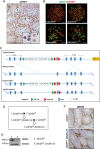
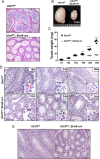
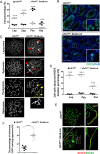
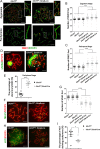
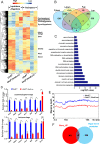
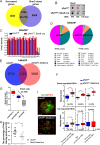
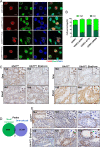
Similar articles
-
Maintenance DNA methylation in pre-meiotic germ cells regulates meiotic prophase by facilitating homologous chromosome pairing.Development. 2021 May 15;148(10):dev194605. doi: 10.1242/dev.194605. Epub 2021 May 17. Development. 2021. PMID: 33998651
-
Zinc Finger Protein 618 Regulates the Function of UHRF2 (Ubiquitin-like with PHD and Ring Finger Domains 2) as a Specific 5-Hydroxymethylcytosine Reader.J Biol Chem. 2016 Jun 24;291(26):13679-88. doi: 10.1074/jbc.M116.717314. Epub 2016 Apr 27. J Biol Chem. 2016. PMID: 27129234 Free PMC article.
-
UHRF1 is indispensable for meiotic sex chromosome inactivation and interacts with the DNA damage response pathway in mice†.Biol Reprod. 2022 Jul 25;107(1):168-182. doi: 10.1093/biolre/ioac054. Biol Reprod. 2022. PMID: 35284939
-
Role of ten-eleven translocation proteins and 5-hydroxymethylcytosine in hepatocellular carcinoma.Cell Prolif. 2019 Jul;52(4):e12626. doi: 10.1111/cpr.12626. Epub 2019 Apr 29. Cell Prolif. 2019. PMID: 31033072 Free PMC article. Review.
-
[Role of UHRF1 in methylation regulation and angiogenesis].Zhonghua Yi Xue Yi Chuan Xue Za Zhi. 2020 Feb 10;37(2):200-204. doi: 10.3760/cma.j.issn.1003-9406.2020.02.025. Zhonghua Yi Xue Yi Chuan Xue Za Zhi. 2020. PMID: 32034755 Review. Chinese.
Cited by
-
UHRF1 Suppresses HIV-1 Transcription and Promotes HIV-1 Latency by Competing with p-TEFb for Ubiquitination-Proteasomal Degradation of Tat.mBio. 2021 Aug 31;12(4):e0162521. doi: 10.1128/mBio.01625-21. Epub 2021 Aug 31. mBio. 2021. PMID: 34465029 Free PMC article.
-
E3 Ubiquitin Ligase Uhrf2 Knockout Reveals a Critical Role in Social Behavior and Synaptic Plasticity in the Hippocampus.Int J Mol Sci. 2024 Jan 26;25(3):1543. doi: 10.3390/ijms25031543. Int J Mol Sci. 2024. PMID: 38338822 Free PMC article.
-
Analysis of DNA methylation changes following Cfp1 knockout in mouse spermatocytes.Anim Biosci. 2025 Aug;38(8):1570-1579. doi: 10.5713/ab.24.0807. Epub 2025 Feb 27. Anim Biosci. 2025. PMID: 40045604 Free PMC article.
-
UHRF1 is a mediator of KRAS driven oncogenesis in lung adenocarcinoma.Nat Commun. 2023 Jul 5;14(1):3966. doi: 10.1038/s41467-023-39591-2. Nat Commun. 2023. PMID: 37407562 Free PMC article.
-
Single-cell multi-omics sequencing of human spermatogenesis reveals a DNA demethylation event associated with male meiotic recombination.Nat Cell Biol. 2023 Oct;25(10):1520-1534. doi: 10.1038/s41556-023-01232-7. Epub 2023 Sep 18. Nat Cell Biol. 2023. PMID: 37723297
References
Publication types
MeSH terms
Substances
LinkOut - more resources
Full Text Sources
Medical
Molecular Biology Databases

